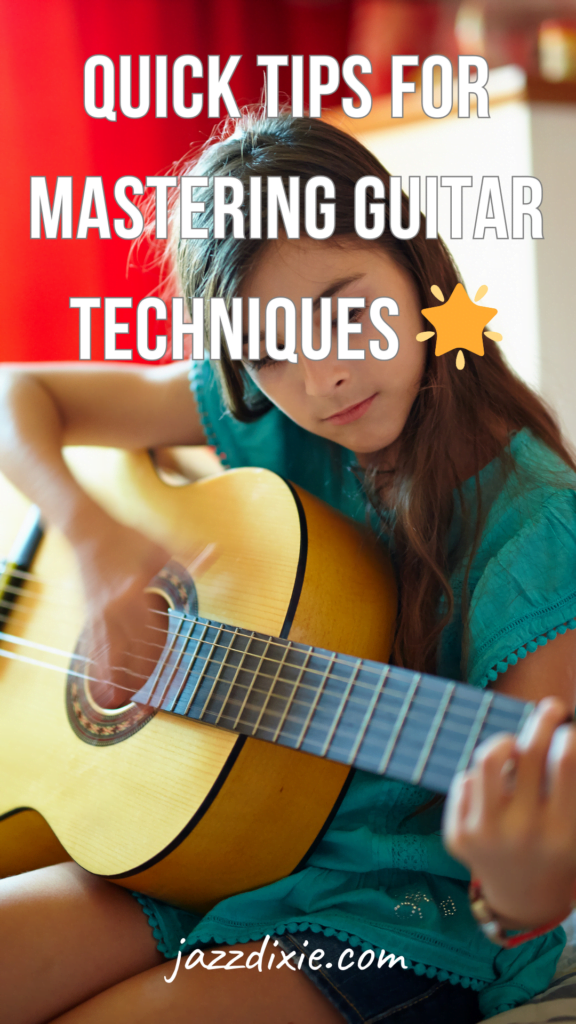Mastering Guitar Chords: A Journey Through Finger Placement
Embarking on the adventure of playing guitar chords can seem daunting at first. However, these initial hurdles should not be a source of intimidation. Indeed, with a bit of perseverance, you’ll soon find this technique to be quite approachable, and it will quickly transform into a joyful process. Playing chords isn’t much more complex than playing individual notes; it’s simply a matter of playing multiple notes simultaneously! This guide, brought to you by our musical instrument emporium, aims to help you learn to play guitar chords easily and swiftly.
Finger Placement and String Numbering
Firstly, it’s essential to familiarize yourself with the strings and understand the correct finger placement on the guitar. To simplify this process, remember that guitar strings are numbered as follows on diagrams:
- Vertical numbering indicates the string number on the guitar, starting from the 1st and ending with the 6th, from the bottom to the top.
- Horizontal numbering denotes the fret number.
Remember, the phrase “place your left finger on the third fret” means positioning your left finger precisely between the second and third fret markers. The string should be pressed firmly against the third fret to avoid any buzzing.
Chord Formation: Finger Numbering
Recall the numbering of your fingers. For the first time, you may even want to draw numbers on your left-hand fingers:
- Index finger is designated as one,
- Middle finger as two,
- Ring finger as three,
- Pinky as four.
- The thumb primarily serves as a support for the hand.
Chord C (C Major)
To produce a harmonious sound from all strings, it’s crucial to correctly form guitar chords. In music, the C chord is a fundamental one. This means it consists of three or more notes played simultaneously on any instrument. The chord diagram is as follows:
- The lowest note, C, is the A string pressed on the third fret.
- The next note, E, is played on the D string at the second fret.
- The G string in this chord is not pressed, hence it rings open.
- The highest note, C, is played on the B string pressed on the first fret.
- In the C major chord, the top string remains open.
Learn Guitar For Beginners
Playing the Notes in Sequence
Play each note of the chord in sequence, starting from the lowest and ending with the highest. Take your time; press the strings at the indicated frets, then pluck each string of the chord in order. Let the note ring as long as you like before plucking the next one:
- Pluck the A string pressed by the third finger on the third fret. Let it ring until it fades. This was the note C.
- Strum the D string pressed by the second finger on the second fret. You played the note E.
- The G string rings open in this chord.
- Pluck the B string pressed by the first finger on the first fret. This is the note C!
Repeat this sequence several times. Only then strum across the four middle strings quickly with your fingers (or a pick) to hear the C major chord in its full resonance.
As you begin to play chords, your fingers might hurt. However, after a few weeks, the pain will subside as calluses form.

Expand Your Musical Vocabulary
Once you’ve mastered the C chord, move on to learning the G (G major) and F (F major) chords, which are also commonly played in this key.
Then, expand your repertoire by learning additional chords as depicted in diagrams. For instance, instead of F major, you can play a lower F. To do this, press the D string at the third fret with the third finger. You’ll notice it sounds the same, but with a richer tone.
Chord G (G Major)
This is another fundamental chord played in the key of C major, similar to C and F. There are numerous ways to play it, even with just one finger.
Popular Chord Combinations
Combine all the chords you’ve learned. Play the C major four times, then the F major twice, and the G major twice. Repeat this sequence several times. Notice how many popular songs can be played with these chords? The fingerings for each chord remain the same at any position within a specific key. Once you’ve mastered all the chords, you’ll be able to play them from chord charts alone, without needing the fingerings.
Practice until your fingers tire. Then rest and continue.










Leave a Comment